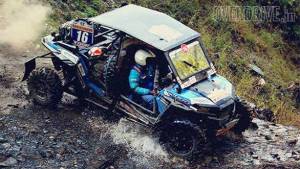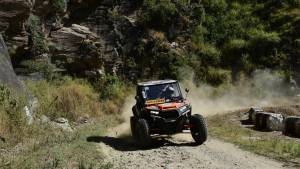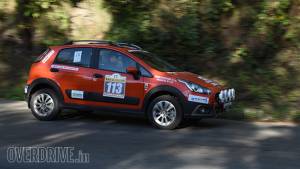2015 Maruti Suzuki Raid De Himalaya: Running on fumes
Although there are several different theories on why anyone would willingly put themselves through the Raid de Himalaya, mine goes like this remember that sense of adventure you had when you were six years old, climbing trees, popping bicycle wheelies, eating things you didn't recognise? Now imagine you're all grown up with a decent amount of money saved up in your bank account, but that has cost you some fun in the sun. Eating a strange fruit doesn't cut it anymore, so you buy yourself a car or motorcycle, spend some time and money on it, and step right up for one hell of an adventure at the Raid de Himalaya.
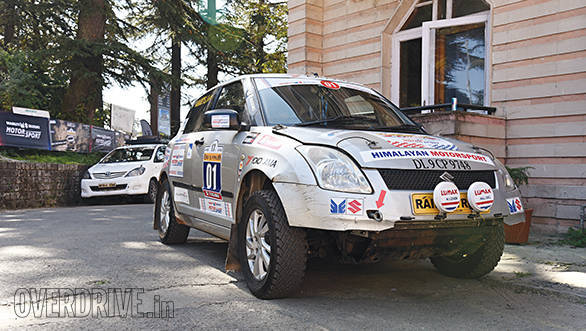
When we were asked which of us at OVERDRIVE would cover the Raid, I jumped at the opportunity. Who wouldn't? It was the legendary Raid de Himalaya! But honestly, I was more excited about my first visit to the Himalayas. To add to that, I got a brand new Maruti Suzuki S-Cross to cover the event! A week of driving through the Himalayas, covering one of the most anticipated motorsport events in India? "It will be helluva lot of discomfort and aches," warned Bert. "But it's going to be one hell of an experience."
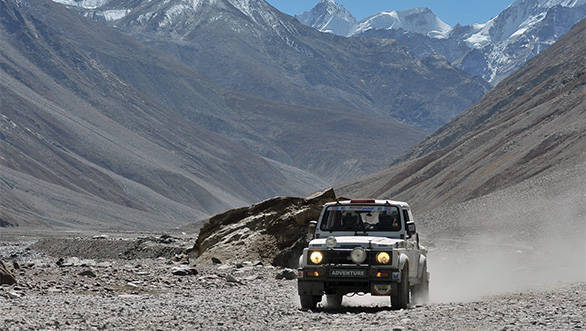
Day 1 Getting to the Raid
An unofficial stage of the Raid is actually getting oneself to the start-line. In some cases, it involves getting your vehicle transported there while you travel comfortably, and in others, it means driving halfway across the country in a Gypsy with no creature comforts and hardened suspension that rattles your spinal cord. The Raid claimed some of its victims before it had even started. I heard that one of the entrants couldn't make it to the start because his vehicle burst into flames along the way. The next set of entrants that didn't catch the ceremonial start did make it up to Shimla, but didn't clear Scrutiny.
Plenty of participants don't enjoy the Raid, and that is part of the Raid ethos. You're pulled out of your comfort zone within ten minutes of the start. And that means right from Scrutiny where even the paper work starts to make you feel uncomfortable.
On the same day, I met Aravind KP, a seasoned rider with titles in the INRC and Supercross championship. He believes that the Raid is the INRC on steroids. "You cover around 300km in a day, which is almost twice the INRC," says Aravind, "However, it's got its own charm, you know?"
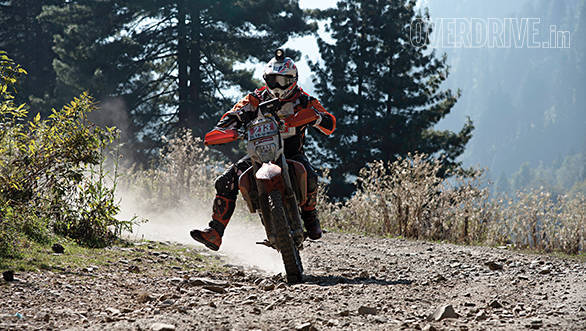
I was dying to find out what this charm was all about. I waited for the day to end, and when it did, I couldn't get a minute of sleep because of all the excitement. Big mistake, as it later turned out that it was the last chance I would have to sleep for anything longer than three hours at a stretch.
Day 2 Shimla to Manali (Distance approx. 300km)
The Raid doesn't start when the competitors line up for the first stage at around 7am. It starts much earlier; closer to 3:30am, when the marshalls and other officials leave as a convoy to set up TCs (Time Checks) all through the stages. I had to ensure that I was part of this convoy, and fortunately (or unfortunately) for me, I was already awake, and didn't have to deal with the usual early morning grogginess.
We followed the convoy in the dark, so we could set up at stage two early enough and by first light, we had reached a ravine with a river running through the middle. Although all I saw were silhouettes, I could tell that by sunrise I would be in for a treat. I had seen the Western Ghats and the Eastern Ghats, but none of those mountains even compare to the sheer magnitude of the ones in the Himalayas. So when we finally set up shop somewhere halfway up stage two, I left everyone behind to walk further up the dirt road to sit at the edge of a cliff and watch the rest of the sunrise.
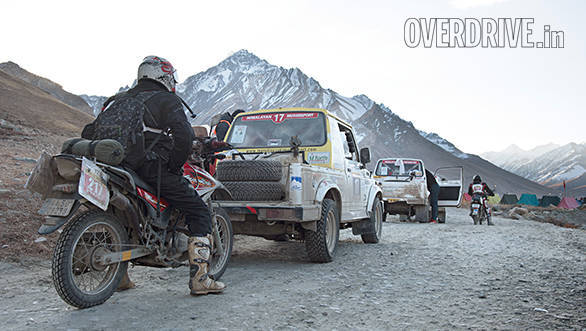
From where I sat, I had a bird's-eye view of close to three kilometres of the stage leading up to my vantage point. When the stage finally started, you could hear the echoes of motorcycle engines thundering all across the valley from miles away. I noticed that some participants, mostly the rookies, were pushing harder than the others. The more experienced of the lot knew better than that. They'd done the same thing at their first Raid, and by the end of day one, their vehicles had run their miles. The Raid is a test of man and machine, and each has to look after the other throughout the journey.
By the end of the first leg, the numbers in the Xtreme category were down from a 100 to around 70. From there we began our 150km journey towards Manali through Jalori Pass. The drive to Manali was long and we reached the hotel by midnight. By the time we hit the sack, it was 1am. "The convoy leaves tomorrow at 3am sharp," the orders were clear and firm.
Great. Two hours of sleep.
Day 3 Manali to Dalhousie
(Distance approx. 350km)
Waking up in very cold weather is quite a task. So the seven alarms I had set at intervals of two minutes each just about did their job of annoying me out of my bed. Although there were two stages scheduled for the day, only one could be held.
When we reached Kantindi, we were instructed to park there and walk up to the start. Little did we know that the start was a good three kilometres uphill. The four of us (the OVERDRIVE camera crew and I) began our trek up, and just as we were cursing our luck, one of the competitors passing by in his Gypsy offered us a lift to the start. So we hopped on to the back, with nothing but a spare tyre occupying all the space, and held on to whatever we could, cameras and all, as he made his way to the checkpoint.
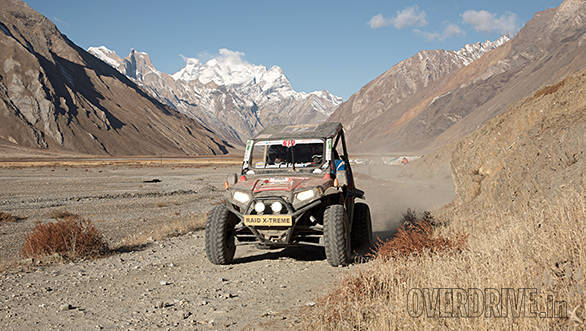
I saw Tsering Lhakpa prepping his vehicle there, with music blaring from his speakers. "The music must never stop," he said with a big smile. "This is my seventh Raid and without music, this would be very hard to do. So the music must go on," he said as his co-driver, Venu Ramesh Kumar urged him to head to the start line.
This stage was a mix of both tarmac and dirt. While the off-roaders had their share of fun in the dirt during the first leg, it was the Gypsys' turn to shine, at least on the tarmac bits. However, Suresh Rana, who was in the lead after leg one, held first place in his Grand Vitara. Raj Singh Rathore was gaining on him as he finished third, behind Harpreet Bawa. In the Xtreme two-wheelers section, Aravind KP was on top of his game with his TVS RTR 450FX, with his team-mate Natraj R following. In third place was Ashish Moudghil, who had returned to the Raid after a three-year hiatus.
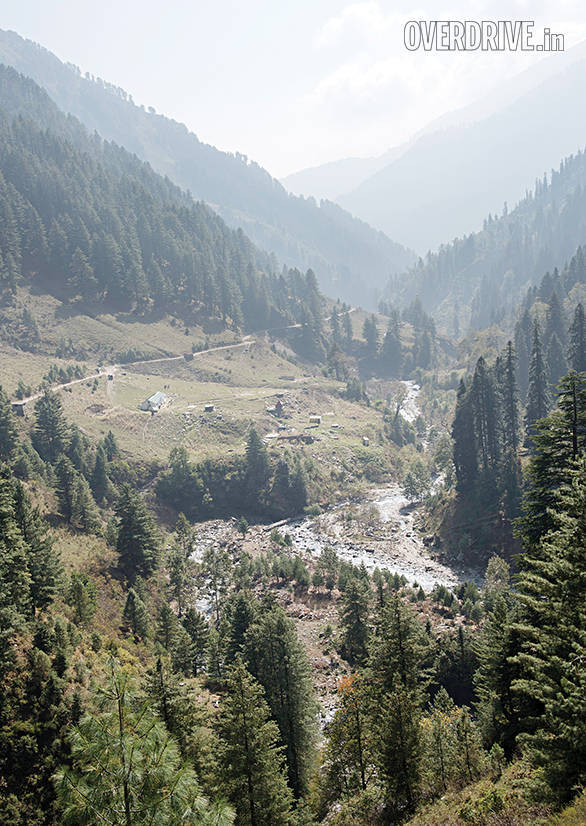
After the stage, we had to make our way to Dalhousie which was 200 kilometres away. We asked the marshalls which route to take and they gave us two options - take the main highway, which was probably faster, or take the route that the stage followed, the more scenic one. By a unanimous vote, we chose scenic over fast. You don't get to visit the Himalayas every other week, so you have to make the most of what you have.
However, we first had to make that long walk back to the car. Again, just as we started cursing our luck, I spotted an official's tow truck heading downhill. We stopped him in his tracks and hopped on to the back. The driver very generously offered us some delicious barfi, which we not so wisely chose over getting a good hold on to something so as to not fall off the truck.
We didn't regret the additional two hours we spent on the broken roads to Dalhousie. It seemed like the further into the Himalayas we went, the more gorgeous and cold it got. We reached Dalhousie relatively early, and managed to get a full three hours of sleep before waking up the next morning. It felt like quite a luxury, considering what lay ahead of us.
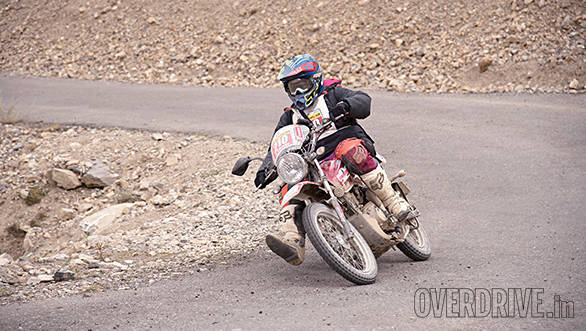
Day 4 Dalhousie to Srinagar
(Distance approx. 400km)
By the third leg, the Raid was starting to take its toll on everybody, including me. And I was just a spectator. I could hardly imagine what the competitors were going through. Driving close to 400 kilometres in a day might be an easy feat on tarmac in the plains. However, in the mountains, covering a 100 kilometre stretch feels like twice the distance and takes twice as long. I wasn't even driving half as fast as the participants, and I was in a heated S-Cross with soft suspension to soak up the bumps. These guys had to put up with the cold, an uncomfortable ride and lack of sleep.
As usual, the convoy headed out at three in the morning, towards Sanghni. The stage was set across 56 kilometres of broken roads, tiny villages and massive green valleys that stretched out as far as the eye could see. We parked a little ahead of an army camp and set up the cameras. While we waited for the stage to open, the Army men generously offered us nice hot cuppas, and we got chatting. They told us that this was very hostile territory, and that in 2008, there were some terrorist encounters recorded in this area. That unnerved me a little and to add to that, I had recently watched a play about a Norwegian playwright who was kidnapped and killed by terrorists in Kashmir several years ago. So once the stage started, I wandered ahead to find a nice spot to shoot, hoping not to get nabbed. I walked up the broken road till suddenly, it turned to freshly paved tarmac roads. I found out that the tarmac marked the beginning of Jammu and Kashmir while the broken road belonged to Himachal Pradesh.
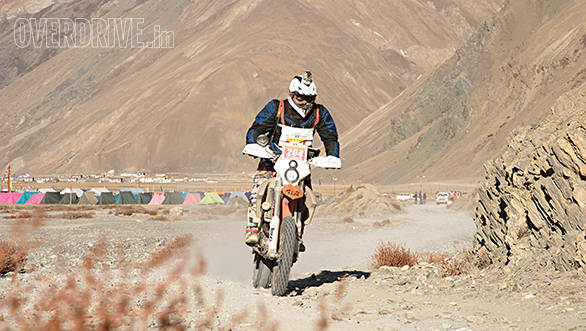
The competitors who had made it this far were starting to get a little more confident now, and they seemed to be pushing harder. This is when I first noticed a customised yellow Royal Enfield ridden by Sarah Kashyap, although at the end of the pack, doggedly making its way through every stage.
By the time the final participant had finished, the chopper for an air-evacuation had been dispatched. Something serious had taken place and only on the way to Srinagar did I see the wrecked Gypsy driven by Samrat Yadav, all the way at the bottom of a steep ravine. From the looks of it, something had gone wrong with his vehicle, which caused it to go straight off a cliff during the transport stage. Thanks to the roll bars, there were no fatalities.
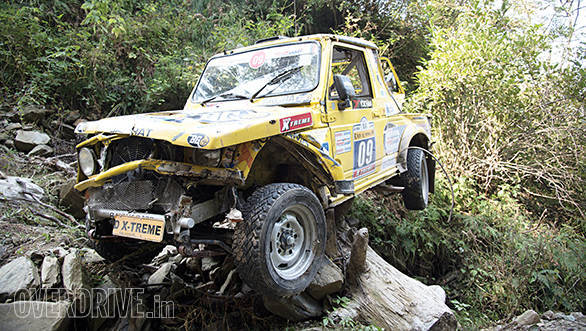
We continued further till we had the option of taking the main highway, or cutting through Sinthan Pass, which, according to all the locals, was the better route and therefore our choice too. However, as we went higher, the roads got worse to the point that the route had turned into a rough path carved out of the mountain with boulders the size of armoured trucks scattered all over. To make things worse, none of the locals knew precisely how far we were from the top. While one said we were just 20 minutes away, the next said that we were at least an hour from it. They were all wrong though, as it took us nearly four hours to scale the pass, where to my relief, I saw tarmac. We stopped at the top to split a Snicker bar, a rare treat from our limited rations, to celebrate the climb and completing 1,000 kilometres on the odo, when we noticed a beautiful trace of the Milky Way above us.
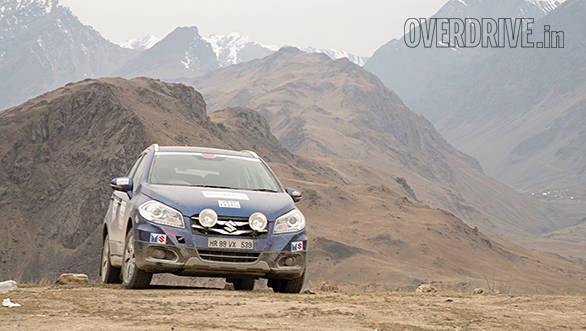
The rest of the journey to Srinagar was smooth sailing as I finally got the chance to let the S-Cross stretch her legs on smooth tarmac. We were back in bed quite late, to finally get some shut eye at one in the morning.
Day 5 Srinagar to Rangdum
(Distance approx. 300km)
The convoy was on the road by three the same morning and we were headed to Rangdum, the final destination before we headed back to Srinagar to wrap up. We were driving up Sonamarg towards Zoji La, and as the convoy stopped for a break, we decided to examine the S-Cross. "No punctures or damage to the car," I declared proudly. "Let's see if it makes it to Rangdum," the cautious side of me reminded. "Of course. Of course, it will," I grew optimistic as I got back into the car and doggedly drove on. By the time we reached Zoji La, the sun had started to rise, lighting up the valley from behind the horizon, and I came to a sudden halt and stepped out of the car to fully appreciate what I was looking at. The road went right through the middle of a valley that was surrounded by huge snow-capped mountains. In the heat of the moment, I forgot how high in the mountains I was and found myself standing in nothing but a thin shirt and jeans at three degrees Celsius. I jumped back into the warmth of my car and continued onward.
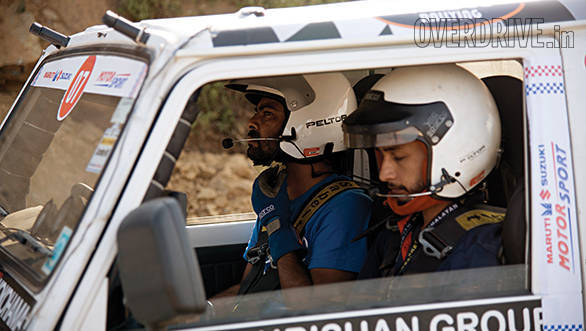
The first stage was from Dras to Umba La, and although they were expecting snow and ice, the weather didn't play foul. The roads were manageable and not too broken, but a small mistake meant shooting down a steep cliff. It was a steady, steep climb to the top, and at this altitude after all three legs, the vehicles were really taking a beating. The second stage, from Panikher to Rangdum was a 53 kilometre competitive stage through some of the worst roads I've ever seen. The order of the top three in the two-wheeler Xtreme category hadn't changed with Aravind KP leading, followed by Natraj R and Ashish Moudghil.
Once the participants had completed the stage, it was my turn to make it up to Rangdum. It felt like the longest, most arduous journey I've ever been through. I started my climb just as the sun started to set and it was dark by the time I got to the worst stretch of the road. We finally reached the camp, and after rambling around till we found our tent, we were out cold. Literally.
Day 6 Rangdum (Distance approx. 180km)
What I woke up to the next morning made all of it worth it. As a writer, I try to capture as much of my experience in words, but as PG Wodehouse said, "The trouble about telling a story is that words are so feeble a means of depicting the supreme moments of life."
Rangdum is a large expanse of flat land at 3,657 metres above sea level, with enormous barren snow-capped mountains and glaciers surrounding it. It was close to five degree Celsius plus wind-chill during the day and around -10 degree Celsius at night. This was going to be the toughest leg of the Raid, with two stages spanning around 90 kilometres each, with dirt roads running between Rangdum and Padum. After five days of continuous driving through some of the toughest terrain, with very little sleep, and no time to eat, this was going to be quite a feat, for both man and machine. To add to that, the competitors were allowed 70 minutes to complete the stage. Lowis Siangshai and Sonam Wangchuk, despite being rookies, broke the stage record with a staggering 77 minutes. "We initially agreed upon taking it easy and just completing the stage," said Sonam, as a we sat around a small wood fire heater in the tent. "But once you're in the car and start the stage, you just want to give it all you've got and be the best."
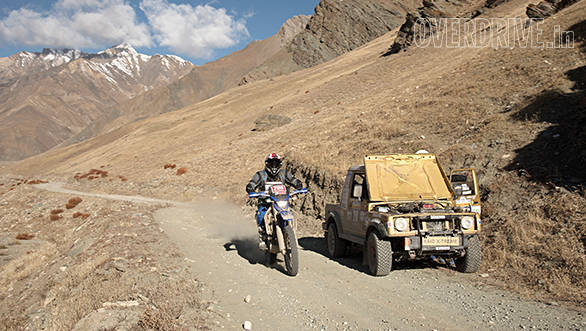
The Raid is about taking hold of the competitor. Sometimes the car is the target, sometimes the driver. Long hours, cold climates, difficult conditions to sleep in by that, I mean in a cotton tent at 4,000 metres, where temperatures are sub-zero these things chip away at your very soul. This was evident even from a spectator's point of view. The air felt very thin, and every movement drew twice as much energy as it would in the plains. I realised this when I stupidly ran to my camera to get a good shot, and I almost fell face first due to the lack of oxygen. "Slow, restricted movements," I reminded myself.
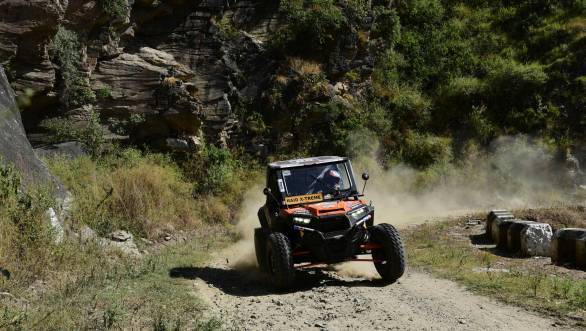
Suresh Rana, who was leading the Xtreme 4x4 category all this while, rolled his car, which cost him 20 minutes and sent him to third place. Making the most of this opportunity Raj Singh Rathore took the lead. When I got back to camp, all the vehicles were swarming with mechanics all around trying to prep them for the final leg of the journey. By the time I got dinner and did my last minute check-ups of the S-Cross, it was half past one in the morning. We unanimously decided to skip sleeping and get a head start so we could get to the finish line well ahead of everyone else, to get a little shut eye there.
Day 7 Rangdum to Srinagar
(Distance approx. 300km)
As soon as we left camp, I took a left turn and drove for a few minutes before realising that I had lost the road quite some time back. Fortunately, I saw the headlights of another car far away and drove vaguely in that direction, till my wheels were back on the road. We made it to Dras where the final competitive stage was to end. It was the same stage that was run on Day 5, but this time, black ice had formed on the road. "I fell around 120km from the final TC and broke my collar bone, when I slid on the ice. But I promised her (pointing at the bike) that I would get her back to Srinagar. So I picked her up and did just that," said Sarah Kashyap. Aravind KP was the first to make it down and was quite happy about his first win in the Raid, "This was the only trophy missing in my house." He was soon joined by Natraj R and then Ashish Moudghil.
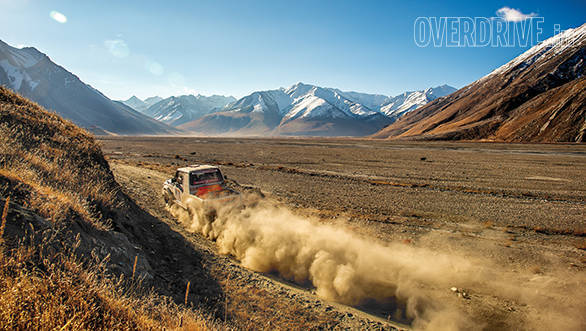
As I said my goodbye to the Himalayas, I asked why anyone would willingly put themselves through this. "Love for the mountains," seemed to be the unanimous answer. And only as I looked back at my journey so far, did I understand the full meaning of what they said.
As the rest of the participants rolled down to the finish, most of them didn't care which position they were in. They were just happy to have made it out alive with their vehicles still in one piece. Just like I did even though I was quite worried about whether or not the S-Cross would make it to the end. It's a car built for paved roads, and where we went, there were no roads at all. But as long as I took care of her, she always seemed to take care of me. I guess the same applied to all the 63 vehicles that crossed the finish line that day.
Update: 2015 Raid de Himalaya: Lhakpa Tsering declared overall winner
Starts Rs 8.39 Lakhs
1462cc
Automatic
105
138
18.55 Kmpl
Related Stories
Top Stories
Latest Videos
Most Popular
- Upcoming Mahindra XUV 3XO: All you need to know
- Budget Sportbike Showdown: Kawasaki Ninja 500 vs Aprilia RS 457 vs Yamaha YZF-R3
- New Suzuki Swift spotted testing
- Nissan Magnite EZ-Shift review - is the AMT any good?
- 2024 Hyundai Creta vs Toyota Urban Cruiser Hyryder vs Skoda Kushaq comparison review - the hype is real?
